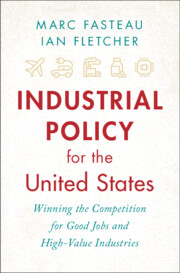 Industrial Policy for the United States
Industrial Policy for the United States Book contents
- Praise for Industrial Policy for the United States
- Industrial Policy for the United States
- Industrial Policy for the United States
- Copyright page
- Dedication
- Epigraph
- Contents
- Figures
- Tables
- Preface
- Introduction
- Part I The Underlying Economics
- Part II Country Case Studies
- Part III The Forgotten History
- Part IV Innovation as a System
- Part V Industry Case Studies
- Part VI Cluster Case Studies
- Acknowledgments
- Notes
- Select Bibliography
- Index
- References
Select Bibliography
Published online by Cambridge University Press: 08 November 2024
- Praise for Industrial Policy for the United States
- Industrial Policy for the United States
- Industrial Policy for the United States
- Copyright page
- Dedication
- Epigraph
- Contents
- Figures
- Tables
- Preface
- Introduction
- Part I The Underlying Economics
- Part II Country Case Studies
- Part III The Forgotten History
- Part IV Innovation as a System
- Part V Industry Case Studies
- Part VI Cluster Case Studies
- Acknowledgments
- Notes
- Select Bibliography
- Index
- References
- Type
- Chapter
- Information
- Industrial Policy for the United StatesWinning the Competition for Good Jobs and High-Value Industries, pp. 767 - 793Publisher: Cambridge University PressPrint publication year: 2024
